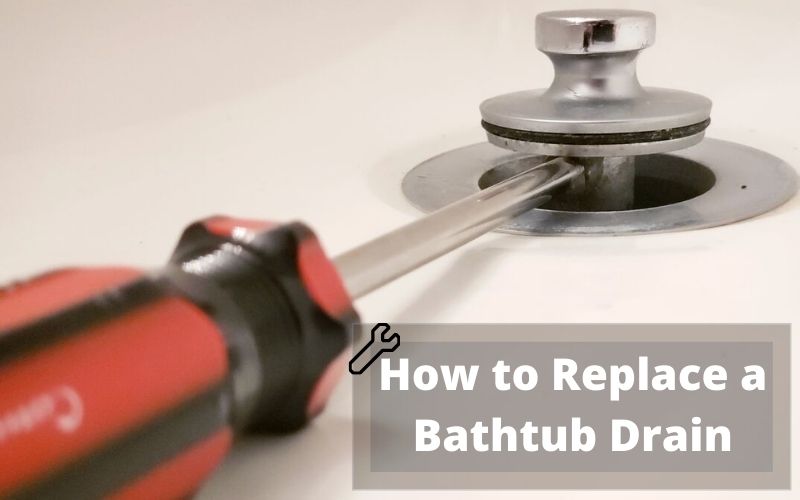In colder areas where temperatures drop for long periods of time, you will likely encounter frozen bathtub drains. The reason for this is not just freezing weather; it’s also inefficient piping, leaks in the walls and cold air getting into the trap pipes and freezing them.
If your beloved plunger failed to heat water and the water is still standing in the tub, you may have lost heart.
Remedies # 1
The Wet/Dry Dry Va + Blow Dryer Method
If there is a wall (closet), you can open it at the drain-end of the tub. You can then blow-dry the frozen pipes by removing the access panel from the floor. You can then cover it with insulation to prevent future damage. To mount the access panel door, purchase one.
If that fails, go to the next step.
Use a wet/dry vacuum to remove any water. Continue using hot water until the bathtub’s frozen drain is cleared. You could even try to suck water from the drain and use a blow dryer at high settings. Salt is a common method of thawing. But if your pipes, traps and other metal parts are exposed to water, you could end up contaminating the tub. I wish you all the best and share your experiences with this bathtub drain freezing remedy in comments section.
Remedies # 2
Baking Soda + Vinegar Method
Let the baking soda sit in the tub drain for 60 seconds. Let the chemical reaction take place by adding 1 cup of distilled wine vinegar to the drain. As a result, the vessel will produce bubbles and a fizzing noise. The mixture will clean out the blocked pipe and remove any sludge. Once the baking soda + vinegar mixture has been poured down the drain, proceed to step 2.
In 3-4 cups of boiling water, mix salt. Slowly transfer the mixture onto the drain of the tub. This will allow the baking soda vinegar mixture to percolate in the frozen pipes. Salt is a strong element that accelerates melting of ice.
Run hot water to drain the clog as soon as possible.
Remedies # 3
Space Heater
Warm the area using a space heater, heat lamp, or heat source. Also pour hot water along with safety salt down to the drain. It will melt any frozen bathtub drains. Keep the heater at least 8 inches away of the tubing and walls to avoid any fire hazards. You should also ensure that no flame-catching rugs are placed in front.
Use Additional Tools To Enhance Your Effects
To achieve a stronger thawing effect you can combine any one of the above-mentioned treatments with these listed techniques.
Warming of the Pipe
Locate the frozen area of the sewer pipe. Locate the coldest part using your fingertips. If you cannot locate the origin, then start to work on the tube closest.
Use a hairdryer. Warm the tube beginning at the coldest section. Wrap hot towels around any frozen pipes that are damp. To restore water flow, thaw the pipe.
Warning! Do not try to heat the pipes with an open flame.
Warming of the Vent Pipe
You can even heat the ventilation pipe (also known a vent stack). (also known as a Vent stack). This is where the air exits from the house. It’s designed to bring fresh air into your plumbing equipment. It will remove odorous and stale air from your home.
The ventilation tube must filter air into the drainage channel. The vent tube will stop functioning if it is frozen.
If you are handy, and not afraid to climb high, you can enter your attic and check whether the exhaust pipe has frozen. The hairdryer trick will warm it up.
Boost Heat Levels
People cut back on heat in an effort to save money. But, the result is freezing pipes. Turn the heat up to a greater degree than you are currently using. Not to be intolerantly hot, but a level that is consistent with heating and not too expensive. To allow heat to reach areas that aren’t heated, open up.
The Best Way to Prevent Future Freezing of BathTub drains: Here’s How I Did It & You Should Too (A Guide Only for Plumbers).
It is possible for bathtub drains to freeze in areas where there is cold.
Look around the area for any air leakage and uninsulated spots. The wind can cause pipes to freeze. Even a small opening will allow for cool air to flow through the pipes. I will remove all old insulation for a thorough visual examination. In these instances, an infrared scanner is helpful. People don’t realize that fiberglass insulation can’t prevent air infiltration.
I ran into a customer facing the same problem. The insulation was leaking and air got into the soffit vent. This allowed the bathtub drainage pipes to freeze.
Proper vents will ensure that there is sufficient airflow from eaves to ridge vent. They are often made of Styrofoam in a variety of sizes. Once they are dry, insulation is applied to them. Proper vents are designed to allow fresh air through the roof vent to the soffit vent. The soffit ventilation allows air to enter the appropriate attic vent. This will keep the attic cool during the summer and allow moisture to evaporate. Ventilation is also important in order to extend the life expectancy of shingles and to prevent them from freezing.
Insulation packed into small spaces is another issue I frequently encounter. Fiberglass insulation needs to be fluffier and more flexible than before. If the fiberglass’s dead-air space is very small, it can cause a loss in its R value. Fiberglass insulation will not degrade if properly installed.
To fix my problem, I attached Styrofoam vents the soffit. I also installed fiberglass high-density insulation. “Open-cell spray Foam” is also an option, but it’s not always affordable. It is important to fix the insulation batts. The edges should be protected with folds. These folds are easily opened and placed on the wooden boards.
The floor-rim joist, or the exterior wall, should be tested for leaks. Electrical connections, dryer vents, as well as piping, should also be checked. Caulk and foam insulation should be used to keep warm air in and cool air out.
After I had insulated all these areas, I filled the entire outer wall and rim joints with 1.5 inch Styrofoam rigidboard insulation. This will close any air gaps and increase R-value. I also used foil HVAC tape for sealing all board gaps. Some large holes were sealed with expanding foam. This not only warms the unheated wall space, but also prevents air from flooding into your bathtub drainage pipes or traps.
Conclusion:
Drain pipes that have been well-conditioned are more likely to drain dry than freeze. A drainpipe may freeze when it’s below freezing. A blocked drain will cause water to freeze in the pipe. A blocked drain that isn’t properly pitched can retain water and freeze it. A dripping faucet could cause water to cool off and freeze several meters downstream of the drain line. This is what makes me shiver every time I hear people recommend keeping a faucet running to prevent pipes freezing. In my 10 year career as a plumber, I have encountered many instances in which the primary sewage pipes were frozen from a leaking toilet or faucet.
If you haven’t experienced any of the freezing situations above, the trap under your tub drain is the only place where your drainage lines are frozen. The trap is a drainage tube in the T-shaped shape that holds water and prevents sewage gasses getting into your house. Heating the trap will clear the frozen bathtub drain. The trap is accessible through either the wall behind the tub drain, or the roof below. You will see the ice melting away by directing the hairdryer’s stream to the spot. If it doesn’t work, check for pipe defects and then try the other remedies I mentioned earlier. In most cases, however, this should work.


